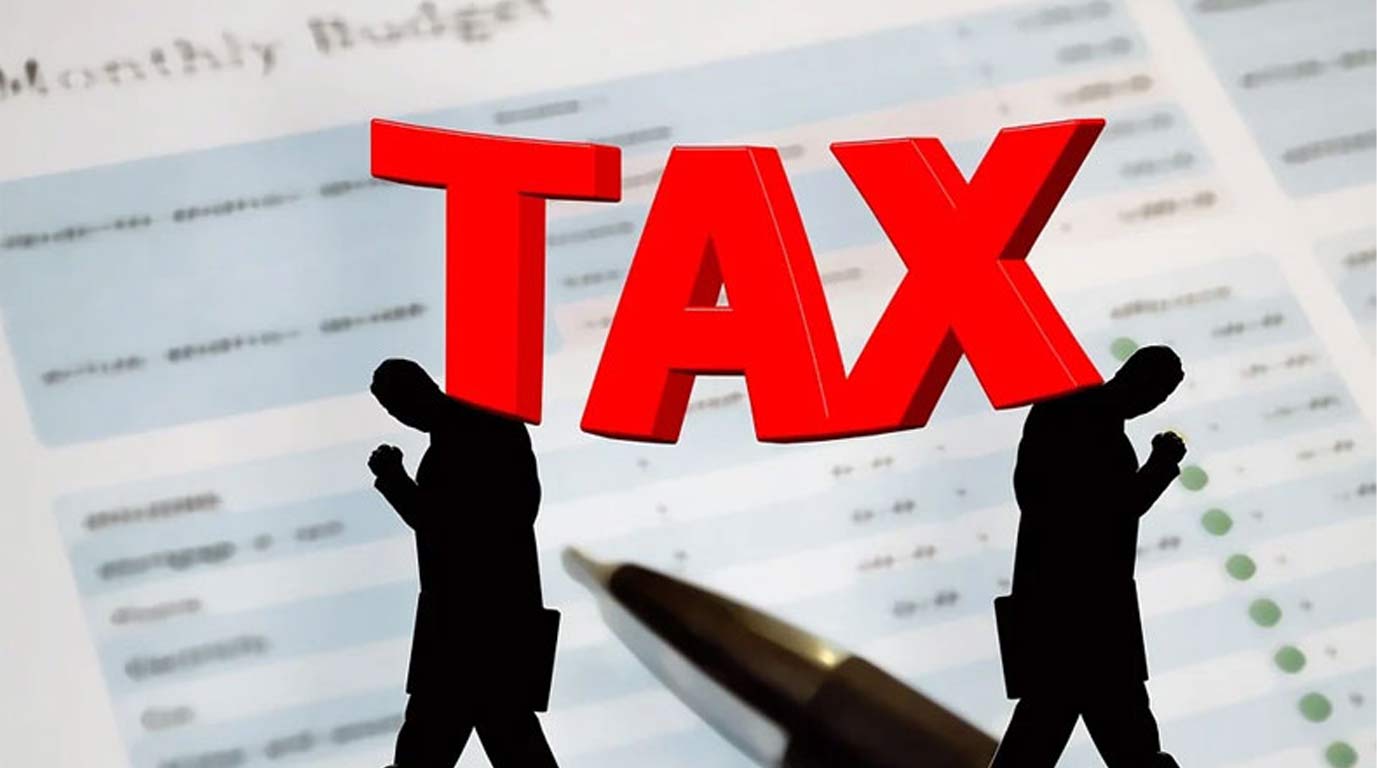
Navigating tax laws can be daunting, and relying solely on tax software may not always simplify matters. Luckily, there are key guidelines and principles that can aid in comprehending the world of taxes and the regulations tied to them.
These encompass various tax obligations and strategies for excluding specific income from being taxed. If you’re seeking guidance on filing taxes in tax season 2023, here are five important things to know about taxes. These will help you to effectively complete your taxes, streamline the filing process, and improve your financial wellness.
Most Important Things To Know About Taxes!
When Are Taxes Due in 2023?
The Office of Management and Budget reveals that the federal government anticipates gathering approximately $2.33 trillion through individual income taxes in the current year. This amount constitutes almost half (48.5%) of the government’s overall revenue.
Federal income taxes had a deadline of April 18, 2023. Authorities chose this date because April 15 and 16 fell on the weekend, and April 17 was the Emancipation Day holiday in Washington, D.C. State income taxes might have varying due dates. For instance, state tax returns are typically expected by May 1 in Virginia.
Today, it takes more brains and effort to make out the income-tax form than it does to make the income. – Alfred E. Neuman
If you applied for an extension, the final date is October 16, 2023. Remember that tax extensions grant additional time to submit your 2022 return but do not provide an extension for paying your taxes.
What happens if you don’t file your taxes?
If your earnings necessitate the need for tax filing and you have outstanding tax obligations, there are repercussions you must consider. The Internal Revenue Service (IRS) enforces penalties for not submitting and making timely payments, along with applying interest charges.
Options for Filing Taxes
You have multiple alternatives; you can opt to handle the process independently, employ tax software, consult a tax preparer personally or online, or seek assistance from a proficient public accountant or registered agent. The extent of support and corresponding expenses vary depending on the complexity of your specific circumstances.
Completing your tax filing at no cost is possible using the IRS Free File program. This initiative involves collaboration between online tax preparation companies and the IRS to provide their services without charge. Eligibility for this program is determined by an income threshold of $73,000 or lower in the year 2022. To obtain further details about tax basics, kindly check the IRS official website.
You might also consider accessing complimentary tax preparation assistance via the IRS Volunteer Tax Assistance and Tax Counseling for the Elderly initiatives, provided you meet the eligibility criteria. Please consult the IRS database to determine whether these resources are accessible within your locality.
A Guide to Determining Your Taxable Income
While it may seem complex, check the following steps to calculate your taxable income:
- Determine your total earnings to get your gross income.
- Make necessary adjustments to arrive at your adjusted gross income.
- Subtract applicable deductions to calculate your final taxable income.
To begin, calculate the total earnings you received in the year 2022, including remunerations from full-time and part-time jobs, self-employment ventures, rental properties, and any other revenue streams. Next, deduct any income that qualifies as an exception according to the tax regulations. For example, you can exclude proceeds from a life insurance policy. This computation will give you your gross income.
Then, deduct any necessary modifications from your total earnings. These modifications could encompass payments made toward a traditional Individual Retirement Account (IRA), student loan interest, and health savings account contributions. The resulting figure will represent your modified gross income.
Ultimately, deduct any eligible reductions from your modified gross income to calculate your taxable income. You can claim the standard deduction: $12,950 (for single filers) or $19,400 for heads of households and joint filers. Alternatively, you can choose to itemize deductions. The resulting figure represents your taxable income and serves as the basis for determining your tax bracket. Remember, investment income is subject to taxation at a special capital gains rate.
Explore the 2022 Income Tax Brackets
A person’s tax category depends on the amount of taxable income they earned in 2022. Each year, authorities modify income thresholds to account for inflation. Consequently, the income ranges for 2022 have expanded compared to those of 2021, while the tax rates have remained constant.
| Rate | Single | Married Filing Jointly | Head of Household |
| 10% | $0 to $10,275. | $0 to $20,550. | $0 to $14,650. |
| 12% | $10,276 to $41,775. | $20,551 to $83,550. | $14,651 to $55,900. |
| 22% | $41,776 to $89,075. | $83,551 to $178,150. | $55,901 to $89,050. |
| 24% | $89,076 to $170,050. | $178,151 to $340,100. | $89,051 to $170,050. |
| 32% | $170,051 to $215,950. | $340,101 to $431,900. | $170,051 to $215,950. |
| 35% | $215,951 to $539,900. | $431,901 to $647,850. | $215,951 to $539,900. |
| 37% | $539,901 or more. | $647,851 or more. | $539,901 or more. |
Collect Tax Filing Details
Whether you employ a tax specialist or handle your tax filing personally, you must gather the necessary documentation. The objective is to compile evidence of your earnings, potential tax-deductible expenses, and records of taxes already paid during the year.
Refer to the following list for the required information
- Personal identification numbers for yourself, your spouse, and any dependents you may have.
- Summary of earnings from the previous year and the corresponding tax payments made. It may include multiple summaries if you held more than one job.
- Documents indicating income received from sources other than your employer (1099 forms).
- Contributions made to retirement accounts.
- Expenses related to property taxes and mortgage interest.
- Details of charitable contributions.
- Amounts paid for state and local taxes.
- Educational expenses incurred.
- Medical bills not reimbursed.
- Copies of your federal and state tax returns from the previous year.
Resolve Your Tax Obligations With the IRS
If you have outstanding tax liabilities:
- You can use different methods to remit the IRS funds, such as electronic payments, wire transfers, debit and credit cards, checks, and traditional currency.
- In the event that you are unable to make a lump sum payment, you may consider an installment plan with the IRS. This arrangement entails a direct agreement between you and the agency to gradually pay off your federal tax debt within a specified timeframe. The IRS offers short-term and long-term installment plans. Regardless of the chosen option, you must make monthly payments until you fully settle your debt.
If you’re receiving a tax refund – Here are some tips to ensure prompt deposit into your bank account:
- Opt for electronic filing instead of submitting a paper tax return.
- Choose direct deposit for your refund disbursement.
- Keep tabs on the status of your refund.
Frequently Asked Tax Questions
How do taxes function?
The United States manages a significant budget to support various initiatives such as constructing roads and infrastructure, investing in education, maintaining the military, and providing social benefits. To finance these essential services, the country levies taxes on individuals and businesses, thereby generating the necessary financial means.
How do I do my taxes as a beginner?
Regardless of the money-saving challenge you are trying, you have to file your returns one day.
- Collect all the necessary documents for your taxes.
- Determine if your parents can claim you as a dependent.
- Take into account any applicable tax deductions and credits.
- Remember to include any income from gig economy activities.
- Opt for electronic filing as a convenient option.












Most Viewed
Cheapest Grocery Store in 2024 – Save Big on Food and Groceries!
The Healthiest Foods under $48 to Add to your Cheap Grocery List Right Now!
10 Budget-Friendly Kids’ Favorite Foods for Picky Eaters
How to Stop Spending Money on Food for Healthier Living